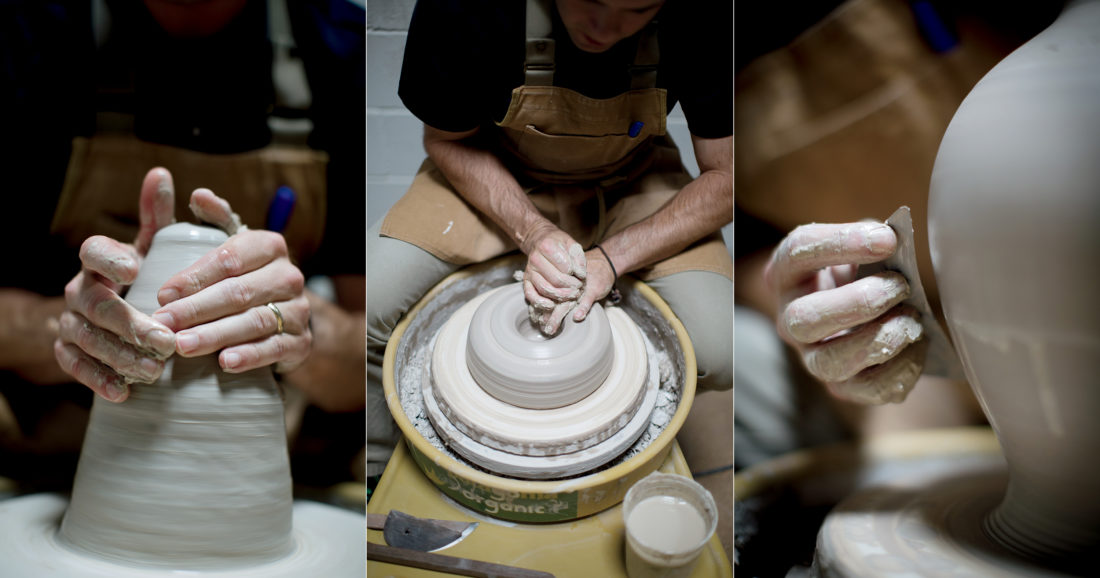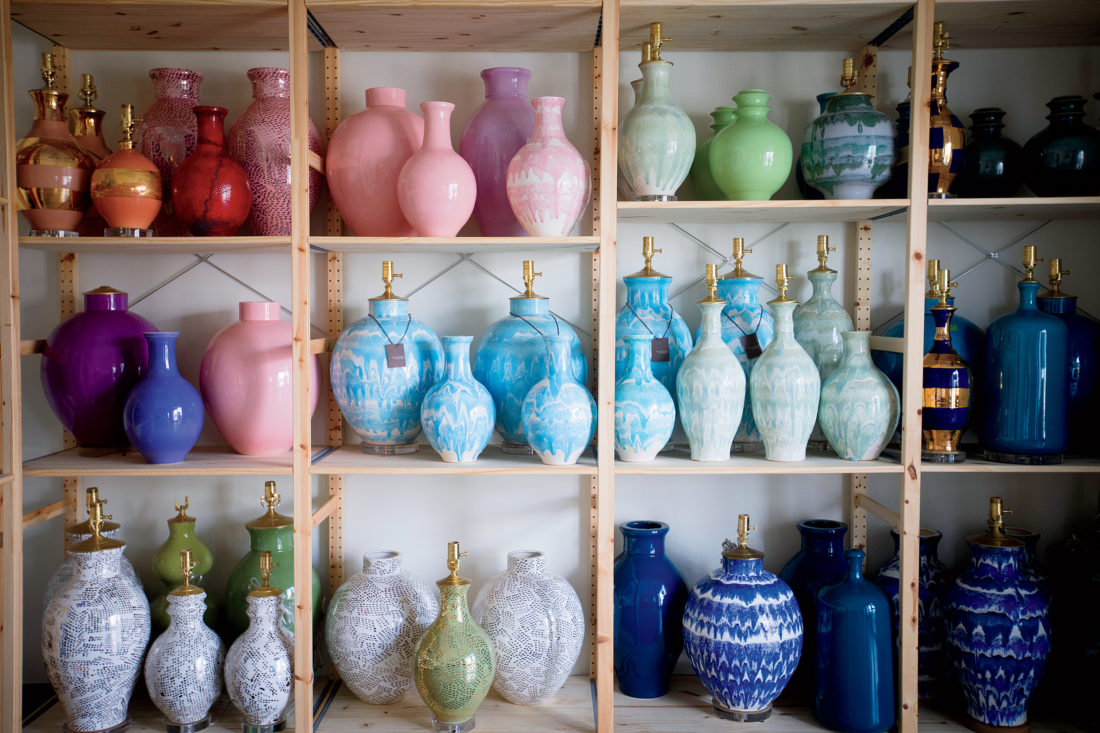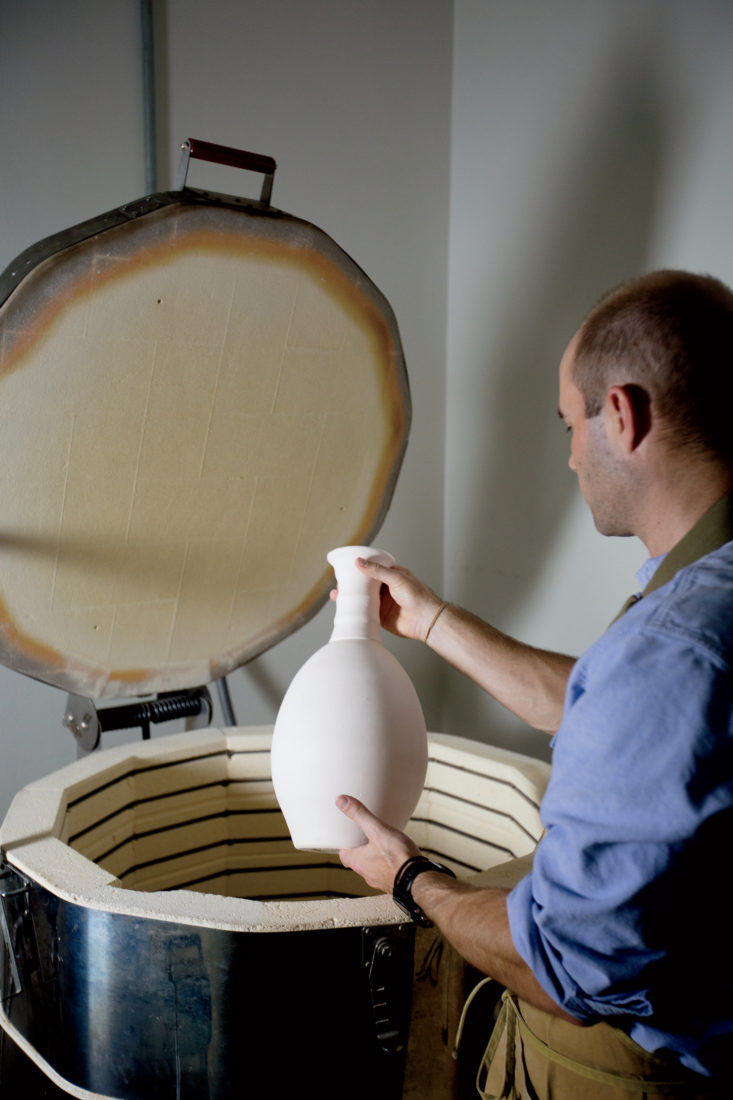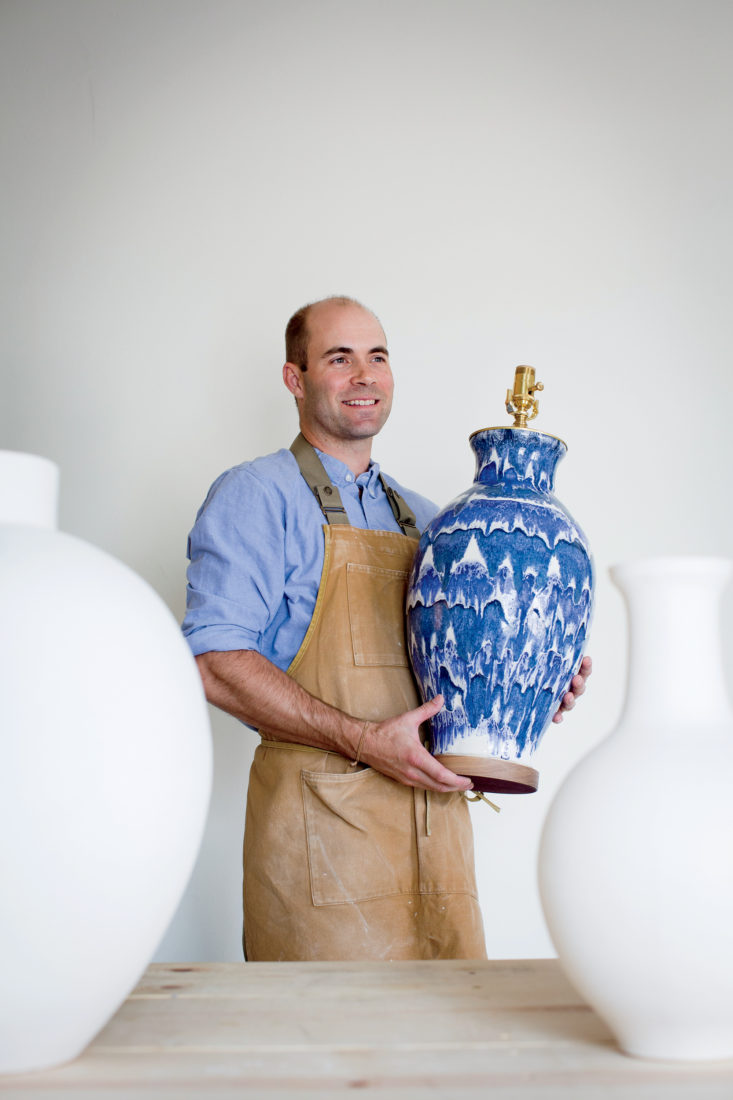Paul Schneider’s first piece of pottery was a mug. He gets sort of shy when he talks about it now, and he laughs when he thinks about how naive he was back then. He was a teenager when he first became interested in ceramics. Before varsity baseball and football games, while his teammates were kill-
ing time in the locker room before warm-ups, Schneider was in his high school’s ceramics studio hovering over a pottery wheel or scooping fired pieces out of a kiln. Now he’s thirty-three, and the lamps he crafts and glazes by hand sell for thousands of dollars, and are sought out by celebrities and millionaires. Mark Cuban, owner of the Dallas Mavericks, just bought two.
Schneider’s studio, on the west side of Dallas, is sparse, with white cinder-block walls and shelves full of lamp bodies waiting to be glazed. Soft-spoken, modest, and polite, Schneider— a fifth-generation Texan—grew up a few miles from here. As a child, the future artist mostly dreamed of being a professional athlete. He was a quarterback and a pitcher, captain of both the football and baseball teams. (A poster of a soaring Michael Jordan hangs on his studio wall.) But sitting at the wheel and shaping a piece of clay gave him many of the same feelings sports did.
“It’s a form of meditation,” Schneider says. “You can’t really think about anything else. You end up controlling your breathing, and it fills your mind. Because if you’re not paying attention, you’re inevitably going to screw it up.” And shaping the clay is just the beginning of the process. “If a painter had to weave his own canvas before he started painting, that’s what it’s like,” he says.

Photo: Allison V. Smith
Schneider molding and shaping a new piece.
Just after he finished high school, people started asking to buy bowls and vases he had made: first, the mother of a classmate; then, Bill Mackin, one of the founders of the Dallas designer boutique Forty Five Ten. Soon Schneider’s pieces were going for upwards of a thousand dollars. (The first one sold at Forty Five Ten went to the late singer George Michael.)
At Rhodes College, in Memphis, Schneider played baseball—still hoping to play professionally one day—and majored in international studies, but he also spent much of his time around any wheel or kiln he could find. During a semester abroad in Spain, he studied ceramics, and he remembers being transfixed by the Aqueduct of Segovia, a massive Roman-era structure still standing after nearly two thousand years. It changed the way he thought about his work: The attention to detail. The permanence. “Being there got me thinking about true craftsmanship,” he says, “about creating something that stands the test of time but is also aesthetically pleasing.”

Photo: Allison V. Smith
A rainbow of lamps and vases ready for shipment.
When he realized baseball was not going to become his career, he threw himself into ceramics full-time in 2009. Four years later, after frequent requests from interior designers, he started making table lamps, and they’re now his signature item. He aspires to make each one an heirloom, something passed down through generations that will grow in value. That philosophy affects everything, from how he initially shapes the clay to the shops in which he places the finished products. “What he’s doing is so different, especially the painting on top of his ceramics,” says Callie Jensch-
ke, an interior designer and co-owner of the design-forward Supply Showroom in Austin that carries Schneider’s work. “There’s an organic beauty. It’s a piece of art that you can put on a table instead of on a wall.”
Schneider walks a delicate line of perfect imperfection. His drip pattern, a design that looks like tiny beads of colorful rain crossing the surface of each lamp, is his singular glazing motif. He discovered the technique by accident, when a kiln overfired and the glaze melted more than he had intended. Many of his patterns and colors are inspired by nature: tomato red, daisy yellow, marine blue. When he looks at glazes he’s created, he says, he thinks of “flying into the Bahamas when you can see all the amazing colors of nature mixing with each other.”

Photo: Allison V. Smith
A careful inspection after kiln firing.
Today Schneider offers ten shapes of lamps, from tall and skinny to short and portly. A few years ago, when he decided he needed to name the styles to make them easier to order, his mother-in-law suggested he name each one after a different spot in Texas. So that’s what he did.
“There are so many great town names,” he says: Elizabeth. Matagorda. Maypearl. Now, as the lamps go out all around the world, they carry with them a little piece of home. Schneider gets animated when he talks about it. “My love of Texas,” he says, “is strong.”








